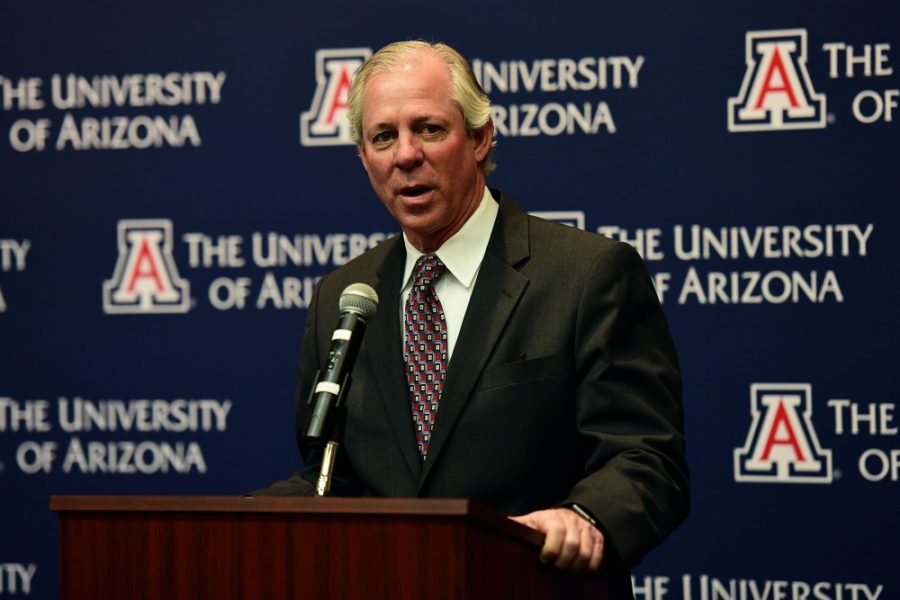The United States is not the only place that has brought in a new president to take over; our beloved UA has brought in a new commander in chief to take place of President Ann Weaver Hart at a rather steep price tag.
Dr. Robert Robbins, the former CEO of Texas Medical Center, agreed to a three-year contract, in which he will be paid just short of $1 million annually. You wouldn’t expect a former CEO to take a humble salary would you? This has proven to be significantly higher than any other president in not only UA history, but in the history of the three public Arizona universities.
The salary does not match up with the position with only nine public university presidents earning over $1 million, but will Robbins take this opportunity to impress us in wanting to make a difference at the UA and in the Tucson community? Many presidents of well-known public universities have donated large portions of their salaries or even requested their salaries be lowered to benefit the university as a whole.
President Gregory Fenves of UT Austin was originally offered a $1 million salary, but only ended up receiving $750K. In the original contract, he was also offered a 12-percent bonus on top of the $1 million, which comes out to $120K. Even then Fenves opted for less. He requested his salary be dropped by 2 percent.
When asked why he requested a lower salary, Fenves said, “One million dollars is too high for a public university,” and he went on to elaborate, saying, “It will attract widespread negative attention from students and faculty given the difficult budgetary constraints of the past five years.”
Related: Robbins confirmed as next UA president
Fenves and his knowledge of the budget constraints and the inevitable controversy that would follow shows a connection to the people and an understanding that leading a public university is a service to the students and faculty, not a high-paying corporate cash cow.
This is something former President of Kentucky State University Raymond Burse understood. The Harvard lawyer and former senior executive of GE allowed his salary to drop from $349,869 to $259,745 simply so the lowest paid campus employees could receive a living wage. When Burse was asked why he would allow around $90,000 to be cut from his salary, he responded with, “I was in a position where I could do that.” Burse’s understanding of the worker gave campus workers who were earning $7.25 an hour an impressive increase to $10.25 an hour.
Men like Fenves and Burse are what advance institutions of higher education; the ability to take less money for themselves shows an understanding of the position and compassion for not only faculty, but us students. In a study by the institute for policy studies, public universities where the president earned a $1 million plus salary were also the institutions that showed higher rates of student debt. “Presiding over a public university should not be a ticket to extreme wealth,” said Dr. Margie Wood of the Institute for Policy studies.
President Ann Weaver Hart took a 23-percent pay cut when she took her current job at the UA. When she began her term as president in 2012-2013, she earned $560,000.
Robbins’ $1 million salary plus the ridiculously high salaries of the UA’s athletic department figureheads really gives you an insight to where your tuition is going. I guess most of you didn’t realize the UA also had that one-tenth of 1 percent socioeconomic burden.
Dr. Robbins, on behalf of all UA students wondering how they will pay their high tuition: Welcome, and I hope you take this opportunity to utilize our money to better the university and help the workers on campus. If not, enjoy the money my parents and I earned from picking strawberries and mixing concrete so you can continue your lifestyle.
Follow Chuck Valadez on Twitter.















